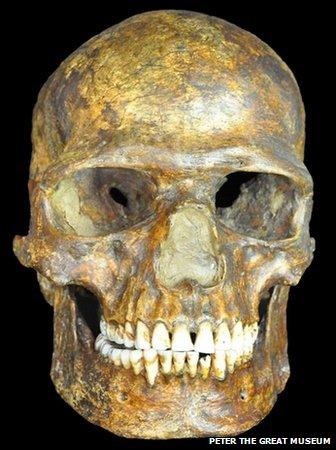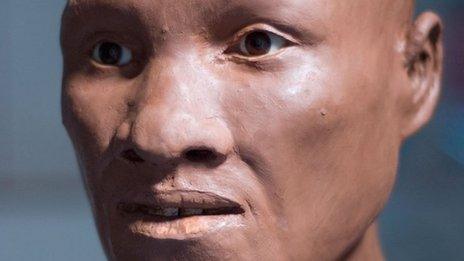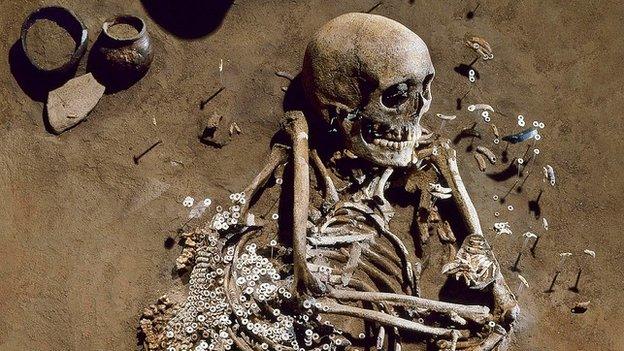First Europeans 'weathered Ice Age'
- Published

The DNA comes from a man who lived in westernmost Russia some 36,000 years ago
The genetic ancestry of the earliest Europeans survived the ferocious Ice Age that took hold after the continent was initially settled by modern people.
That is the suggestion of a study of DNA from a male hunter who lived in western Russia 36,000 years ago.
His genome is not exactly like those of people who lived in Europe just after the ice sheets melted 10,000 years ago.
But the study suggests the earliest Europeans did contribute their genes to later populations.
Europe was first settled around 40,000 years ago during a time known as the Upper Palaeolithic.
But conditions gradually deteriorated until ice covered much of the European landmass, reaching a peak 27,000 years ago.
The ice melted rapidly after 10,000 years ago, allowing populations from the south to re-populate northern Europe - during a time known as the Mesolithic. But the genetic relationships between pre- and post-Ice Age Europeans have been unclear.
Some researchers have in the past raised the possibility that pioneer populations in Europe could have gone extinct some time during the last Ice Age.
And one recent study looking at the skull features of ancient Europeans found that Upper Palaeolithic people were rather different, external from populations that lived during the later Mesolithic period.
In the latest study, an international team of researchers sequenced the genome (the genetic "blueprint" for a human) of a man buried in Kostenki, Russia.
They discovered a surprising genetic "unity" running from the first modern humans in Europe, through to later peoples. This, they claim, suggests that a "meta-population" of Palaeolithic hunter-gatherers managed to survive the Ice Age and colonise the landmass of Europe for more than 30,000 years.
"That there was continuity from the earliest Upper Palaeolithic to the Mesolithic, across a major glaciation, is a great insight into the evolutionary processes underlying human success," said co-author Dr Marta Mirazón Lahr, from Cambridge's Leverhulme Centre for Human Evolutionary Studies (LCHES).

This reconstruction shows an Upper Palaeolithic woman from southern France
"For 30,000 years ice sheets came and went, at one point covering two-thirds of Europe. Old cultures died and new ones emerged - such as the Aurignacian and the Gravettian - over thousands of years, and the hunter-gatherer populations ebbed and flowed.
"But we now know that no new sets of genes are coming in: these changes in survival and cultural kit are overlaid on the same biological background."
She added: "It is only when famers from the Near East arrived about 8,000 years ago that the structure of the European population changed significantly."
The arrival of the first farmers transformed the genetic landscape of Europe - to the extent that no modern population is a good match for the Mesolithic Europeans encountered by the farmers as they spread out across the continent.
The farmers carried the signature of a cryptic population which split off very early from all other Eurasians, including early Europeans and East Asians, and survived in some unknown place until some of their descendents invented agriculture in the Middle East - carrying it into Europe after 8,000 years ago.
"This mystery population may have remained small for a very long time, surviving in refugia in areas such as the Zagros Mountains of Iran and Iraq, for example," said Dr Mirazón Lahr.
"We have no idea at the moment where they were for those first 30,000 years, only that they were in the Middle East by the end of the ice age, when they invented agriculture."
Intriguingly, the Kostenki man already shows some evidence of mixing with this very old population, which has been dubbed Basal Eurasians. But analysis of the Europeans who emerged from the Ice Age 10,000 years ago show little sign of this ancestral component in their genomes.
- Published22 October 2014

- Published17 September 2014
.jpg)
- Published20 November 2013

- Published10 October 2013
